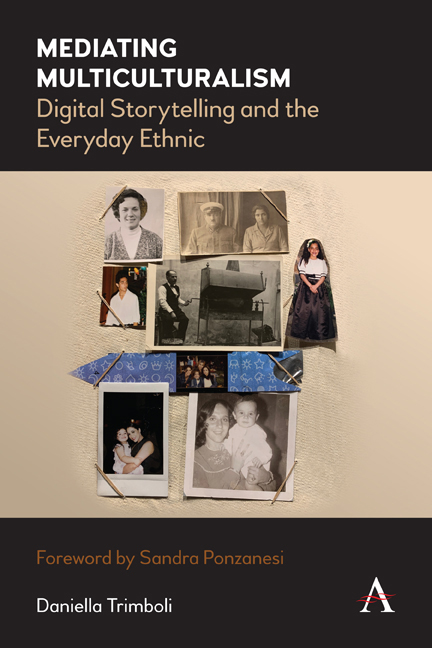Foreword
Published online by Cambridge University Press: 21 August 2020
Summary
To talk about multiculturalism today seems not only obsolete but also irrelevant. Yet nothing could be more untrue and problematic. Despite the decline in the popularity of the term and the somewhat shared feeling that multiculturalism has failed or is inadequate, multicultural coexistence and conviviality is more a reality now than ever before.
The necessity of continuing to address contemporary migrant flows, with the unresolved tensions about increasing diversity and intercultural conflicts, only testifies to the need to revisit multiculturalism not as a top-down policy instrument but as a part of everyday reality that is not going to wane any time soon. Doing multiculturalism as a form of participatory culture, where different voices and creative representations are given pride of place, is the focus of Mediating Multiculturalism: Digital Storytelling and the Everyday Ethnic, which offers a groundbreaking and innovative intervention into the notion of multiculturalism as ‘mediation’. This mediation takes place not just through different media and fields of media expertise but also though the articulations of different forms of everyday cosmopolitanism, where negotiations of identities, belonging and citizenship are the focal point within a wider national and transnational understanding.
This book provides an invaluable read for anyone wanting to know more about the international dynamics of multicultural theory, policy and culture, understood through the bottom-up perspective of migrants’ creative practices. Digital storytelling offers an engaging entry into the possibility for self-expression, self-representation and self-creation, mediated through the tools and practices of different media affordances and infrastructures. It is analysed as a genre that confirms or deviates from normative notions of whiteness and ethnicity, offering new creative insights into the multiplicities of everyday life for migrants and ‘strangers’ as subjects in Australia.
The book is particularly successful in bringing theoretical sources and creative material into dialogue to see whether the ‘subaltern’ subject can speak, even if this is within the narrative framework provided by institutionalised forms of digital storytelling. As this is a medium that enhances the voice of the other, it is particularly critical to dissect and analyse the genre in its potential, contradictions and reinforcing normativity.
- Type
- Chapter
- Information
- Mediating MulticulturalismDigital Storytelling and the Everyday Ethnic, pp. xi - xiiPublisher: Anthem PressPrint publication year: 2020

